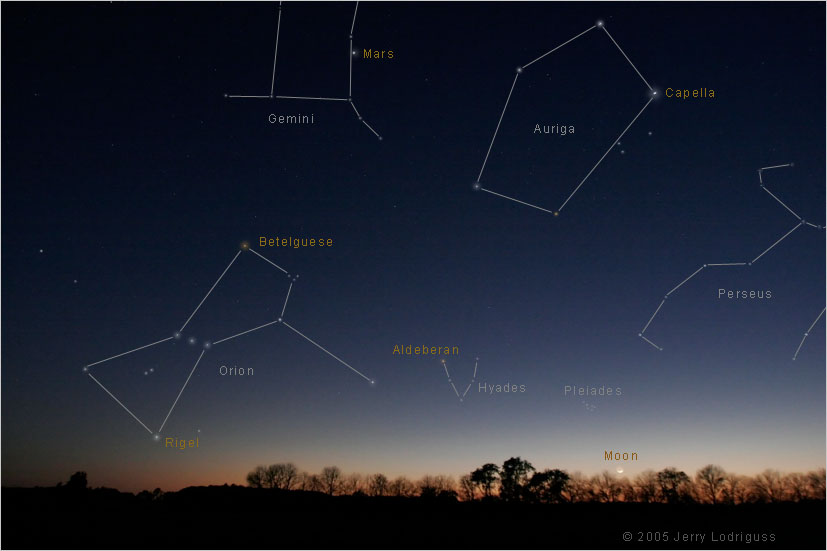18:10 - 18:25 || 2
19:20(ish) | 1
22:00 - 22:30 ||||| ||||| || 12
22:30 - 23:00 ||||| || 7
23:00 - 23:30 ||||| ||||| ||||| 15
TOTAL OF 37 STARS
On the peak night of the Geminid's Meteor shower you are supposed to be able to see 80 falling stars an hour. As you can see, I did not see that many. There are a number of reasons for that;
- Time of night : the best time, I have found, to observe a meteor shower is between midnight and 3:00. Last night I was a couple hours early. I did note that the later it became, the more consistently the stars fell.
- Night vision : - although the backayd is fairly dark, the effects of the near by street lamps do ruin your chance of seeing stars quite a bit.
- Also, the moon was nearly a half moon and extremely bright. I would have to say that it bothered my eyes a lot more than the street lights.
- Obstructions of your view : unfourtunately when I was gazing, the area of the sky I needed to focus on was blocked by a tree. The later it got, and the higher in the sky Gemini was, more falling stars were able to be seen. Thankfully, it was an extremely clear night and there were not any clouds in the sky.
 |
| Orion and Taurus |
Other than falling stars I was able to find some constellations.
- Cassiopia - Five relatively bright stars make a W to form the shape of the sitting Queen.
- Orion - Easily distinguised by his 3 star belt, Orion the hunter was the second constellation I found. The Orion and Taurus constellations are what I would call complimentary constellations because they form a "scene". Also, the red star in Orion's shoulder is Betelgeus. This is where he was supposedly shot by an arrow.
- Taurus - In the night sky Taurus, the bull, is being held at bay by Orion (following Orion's belt to find Taurus' V head). The noteably bright star in Taurus' head is Aldebaran. I don't know any story for this star.
- Gemini - The Twins were hard for me to find. Mainly because I have never knowingly seen them before and I didn't really know what to look for, other than the source of the falling stars. The 2 bright stars in the constellation (which I think are the heads of the twins) are Castor (Aplha) and Pollux (Beta).
- Pleiads - A star cluster found almost within the Taurus constellation
- Also seen (but I don't know enough about) : Triangulum, Perseus, Andromeda and Aries.
 |
| Pretty much what I saw throughout my gazing Excellent photo. |
Odd as it is, I was unable to find the Big Dipper, or the Little Dipper, or the North Star. Maybe this is in connection with my disorientation here?
It was a gorgeous night, not cold at all. At 5C I was well over dressed. Laying out on the table in the middle of the backyard with my duvet, listening to Broken Social Scene I could have, and probably should have gone to sleep right there..
What an awesome astrology science lesson of the night sky. I have always spent time searching for the various constellations. Our favorite months are dec through March. We are waiting for another astrology observation on your blog
ReplyDeleteMaybe I will take up Monday night star gazing..
ReplyDeleteit seems everytime I try to make something a weekly thing it doesnt seem to work out though..
I'll keep you guys up to date for the meteor showers though!
Also, take me with you stargazing when you get home mmk? I've wanted to for FOREVER. Maybe I will before then, but if I do I won't complain about going again :)
ReplyDeleteI will definitely take you star gazing.
ReplyDeletebecause you know, you have to be taken somewhere so you can see the stars.. :P
which actually is partially true.
but yeah, I am 100% down.